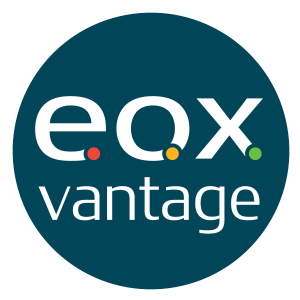Published in CHART Exchange | July 2021 issue
Author: Mike Fieseler
Like any other business, insurance entities improve operations, efficiency and profitability by reducing costs, improving quality of their offerings, achieving higher speed to market and finding ever better ways to attract and keep customers.
Those of you who have read my previous articles probably will not be surprised to hear that I advocate workflow automation to realize all these benefits and advantages. Automation methods and tools are available to simplify and speed up every step of the policy lifecycle. Some of the most time-consuming tasks are routinely done by hand, when they can and should be performed by computing power.

At the start of the cycle, for instance, processing applications by potential policyholders eats up a lot of the company’s productivity bandwidth when handled manually. If you have people deciphering entries as soon as applications come in and transcribing them into a system, you are sacrificing hours of time and likely suffering through a great deal of human error.
The straight-through processing method removes the messy human element from this starting point. Instead of many hands having to touch the material along the way, the data pretty much just goes straight through the application system and comes out the other side in an actionable format for underwriters or other reviewers and decision makers.
Straight-through processing is noted for its capabilities of simple, fast, complete data gathering, input and validation. Straight-through processing and similar automation tools can quickly and accurately take care of much of the ponderous, time-hungry pre-policy needs:
- Gather data
- Validate and qualify data
- Pre-populate data fields
- Enter data into systems
- Do quality check reports
To expand on a couple of these points, an automated process can scan incoming entries and conduct an OCR-style data extraction of the text. There are products out right now that perform with admirably high (98-99%) accuracy rates.
They leave only the messiest chicken-scratch scribbling for some eagle-eyed team member to figure out! By the way, that individual will also be automatically notified when there is a field to review. Changing to this way of doing things will convert hours of data entry to minutes of data review, and in the long run save potentially hundreds of thousands to the bottom line.
Not to mention, pre-population can take away a lot of the effort from prospects and your own team members. Based on just a few lines of inputted data, many additional lines can be auto-filled by activating pulls to external data sources. A typical policy application might need 80 data inputs to be complete and ready for an underwriter to review.
This heavy volume of data, its quality and its completeness/incompleteness have been a major pain point for both insurers and insureds for a long time. But with straight-through processing and its ability to retrieve information from outside sources, getting applicants to supply just six basic pieces of information can then allow the system to find all the remaining data on its own.
The results can be extraordinary. Some of our clients have seen processing times go from several days to less than 15 minutes. That kind of speed and responsiveness allows insurers to close more business and gain higher retention/renewal rates.
How does this all work together in the real world? Let’s take a quick look. I have been working with a client this year who wanted a way to quickly return a quote for multi-carrier packaged insurance.
In the past, package policies have been mainly targeted to businesses, especially small businesses. It allows great customization options, since every company has different needs, as well as cost savings on premiums.
In recent years it also has become a bigger part of the pie for individual policy holders. Home and car owners can combine auto with home insurance, or different components like liability, personal injury, collision into one policy – or at least conveniently get multiple coverages at the same time/transaction while getting what amounts to a volume discount. It has proven to be a lucrative approach since every consumer loves the feeling of getting good value for their money.
Now, this particular client sells auto insurance and wanted a method to incorporate other forms of insurance into a policy quote. In the past, this would involve sending entered information out to multiple carriers and receiving back a response to be used in a quote.
Normally this process (done the old, manual way) would take around five hours. With the automated/straight-through processing route, the time is reduced to five minutes or so. Take a moment to consider what could be done with all that time. Automation makes it possible to retrain the team members who were doing all that slogging and redirect their efforts to do much more vital work.
Those who are able to give a more or less instant quote should find that consumers are more likely to purchase the policy, as well as retain it when it’s time to renew because they know dealing with the supplier is a no-fuss process. The concept is simple: Don’t give prospects a chance to shop around! When they push the button and a reply comes moments later, that’s a great incentive and a natural reaction to just go ahead and buy the policy.
It plays into the immediate gratification expectations that have grown greatly during the pandemic, as more and more of us got used to fast interactions while shopping online. Insurance is becoming a speed game. The days are over when customers would have to wait around weeks for a quote – nowadays their business will be long gone by then, and chances are they won’t even remember asking for it!


